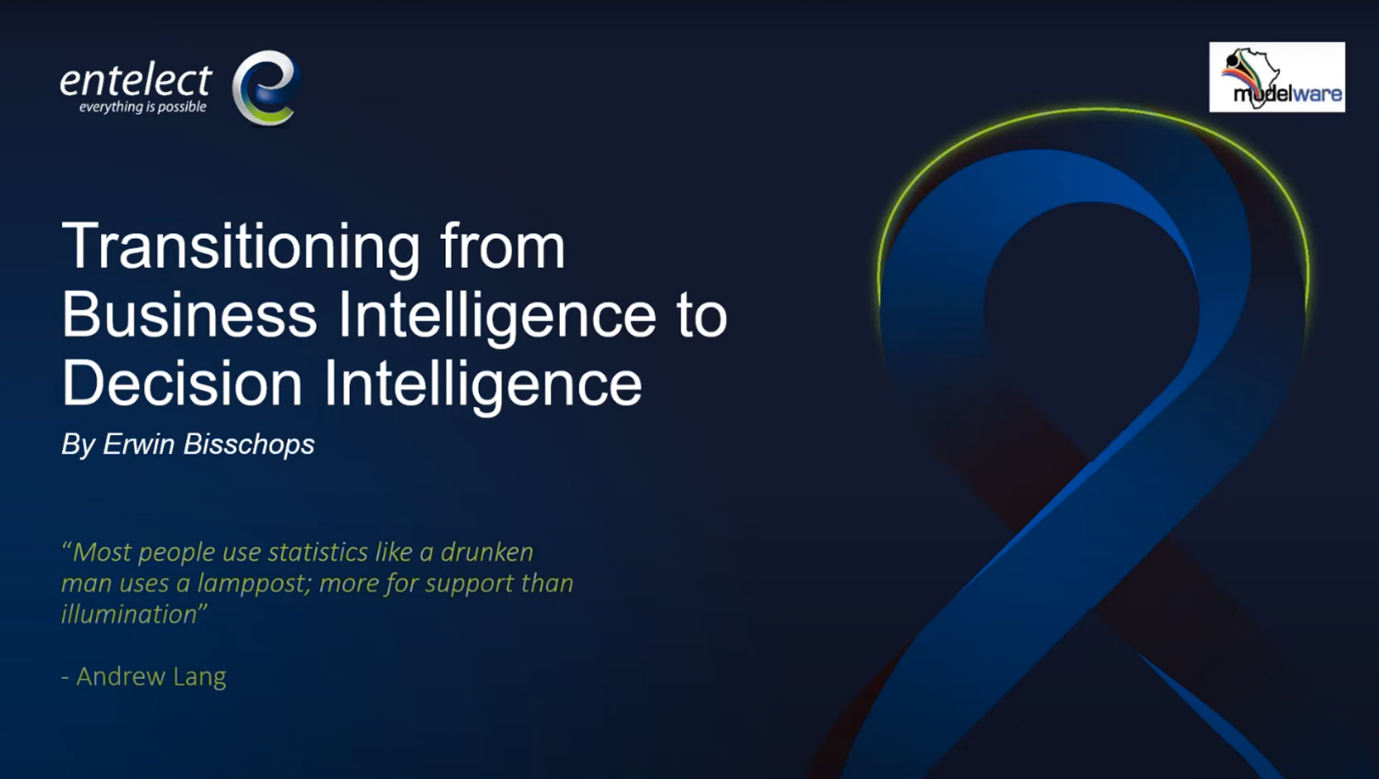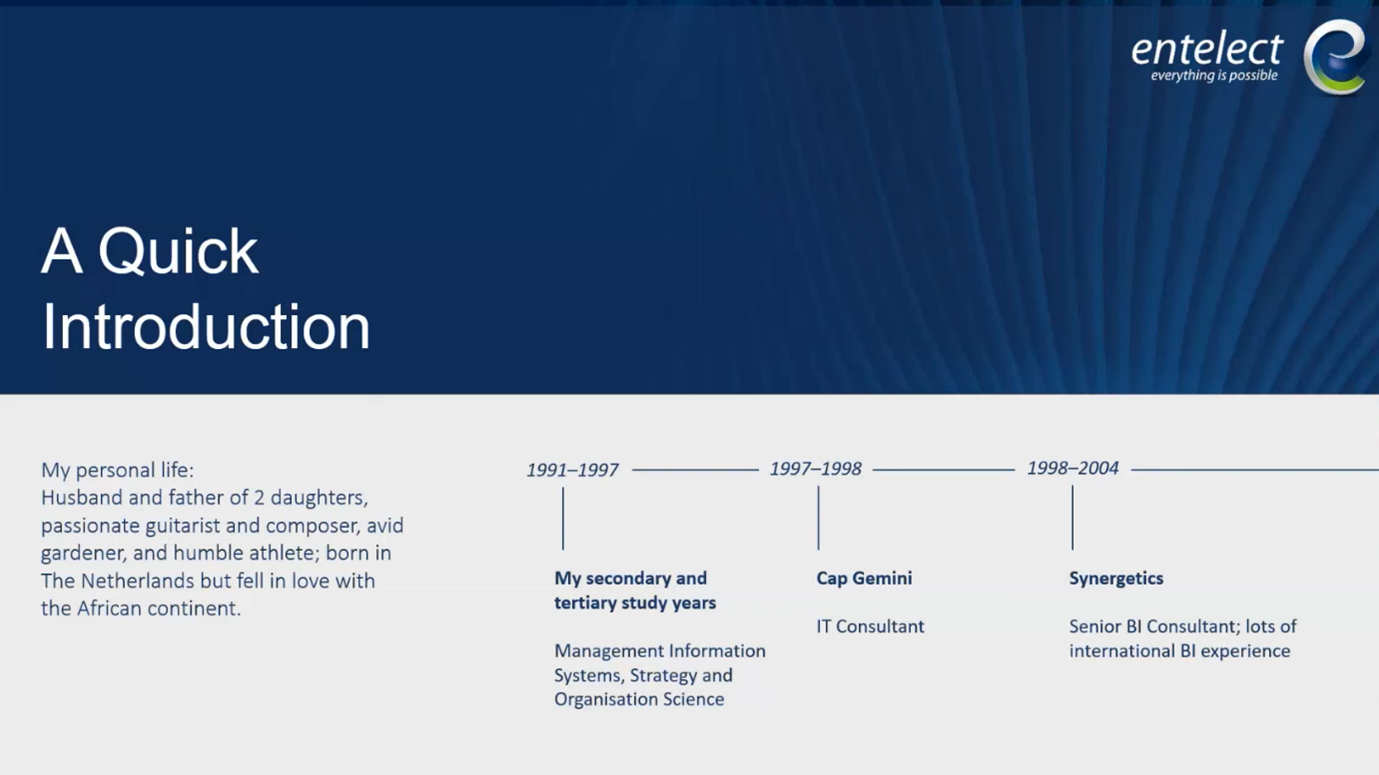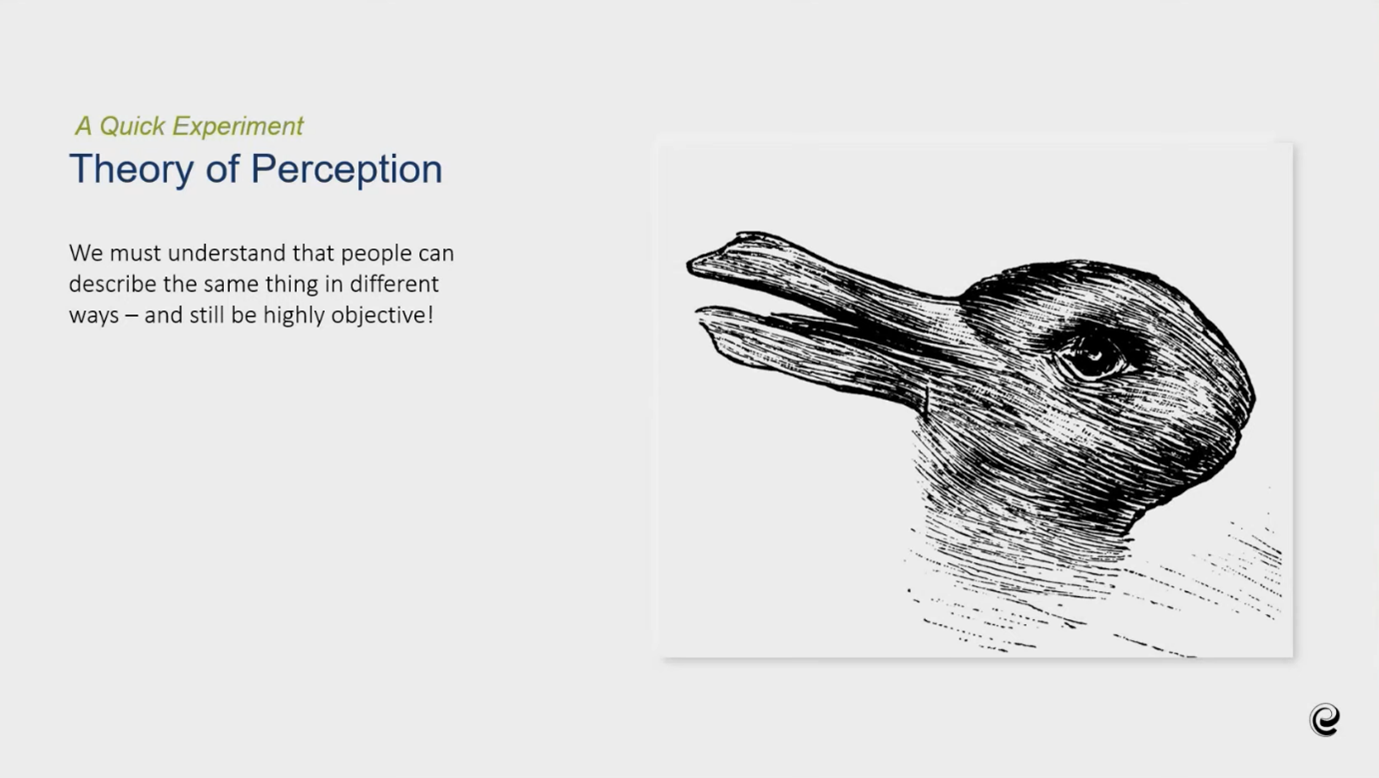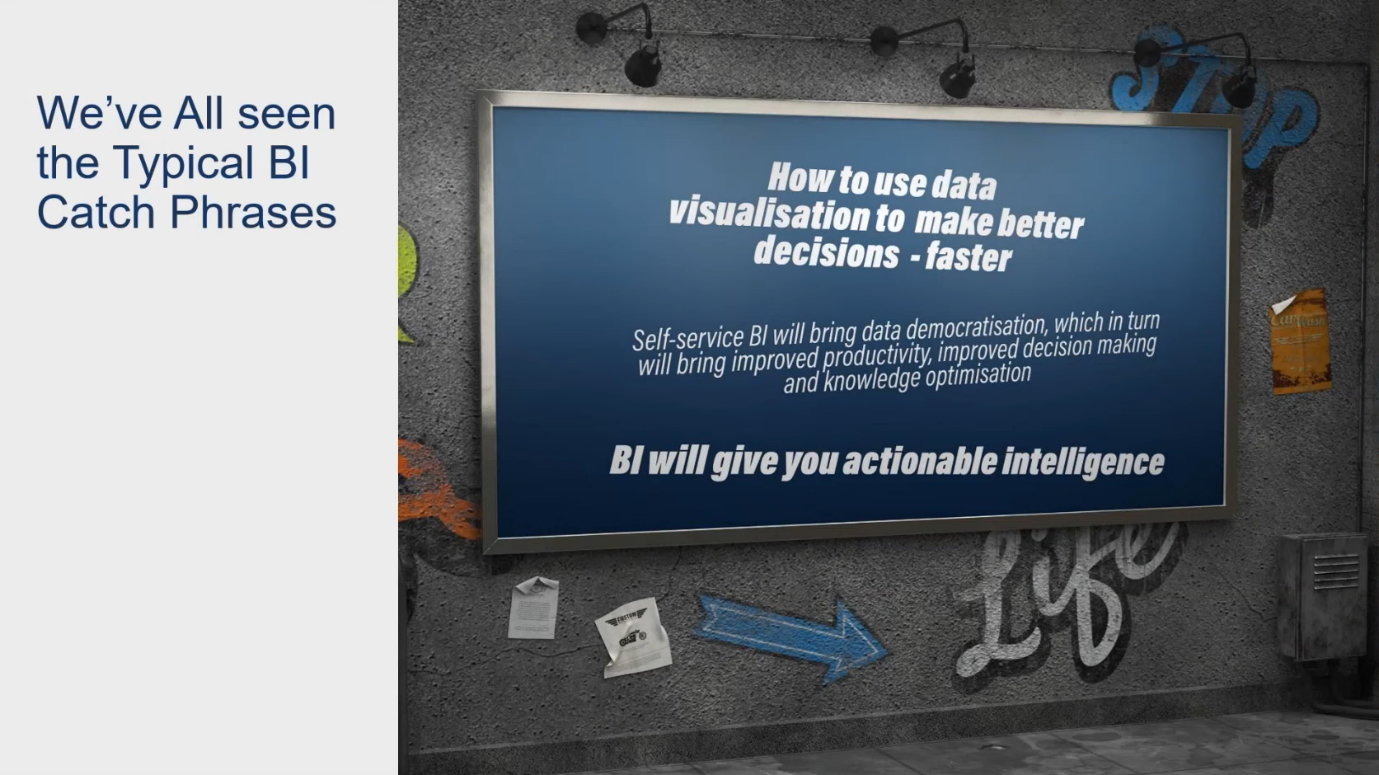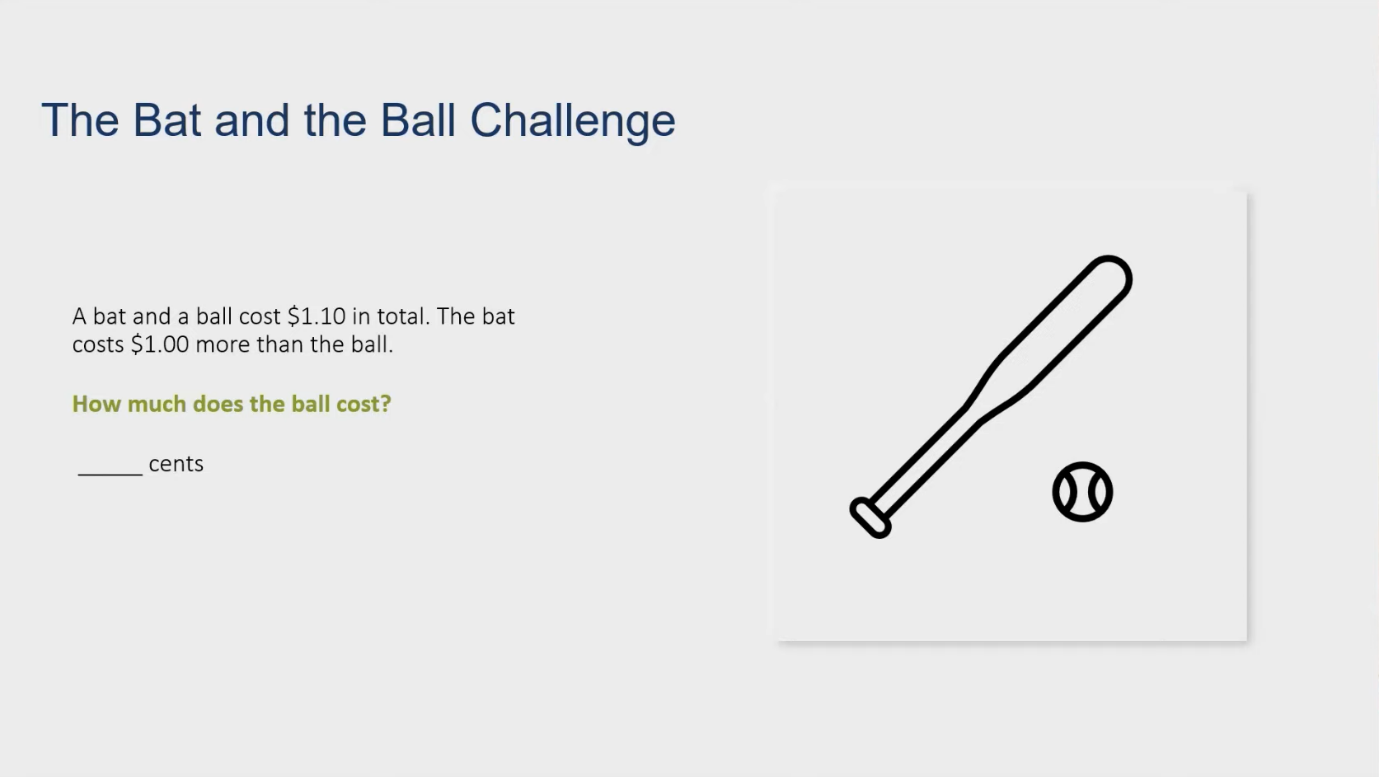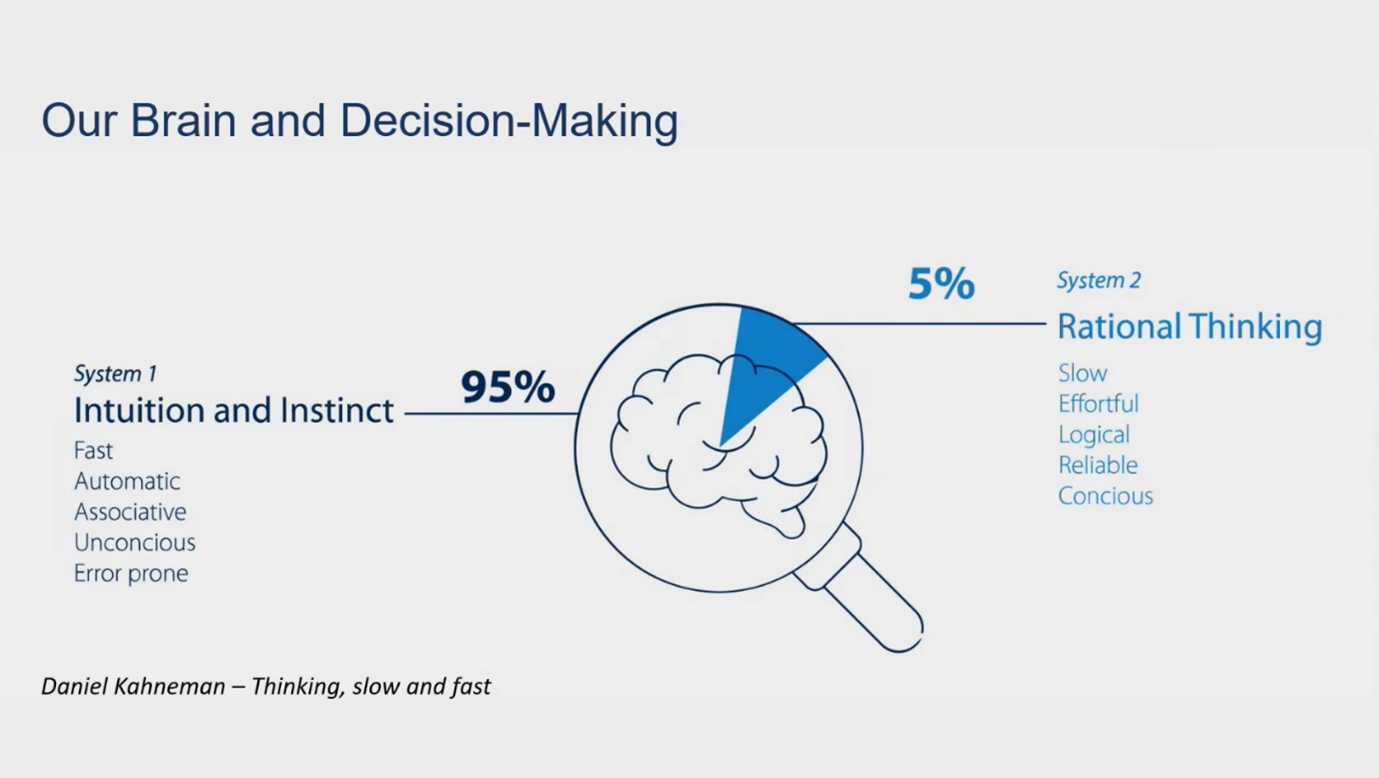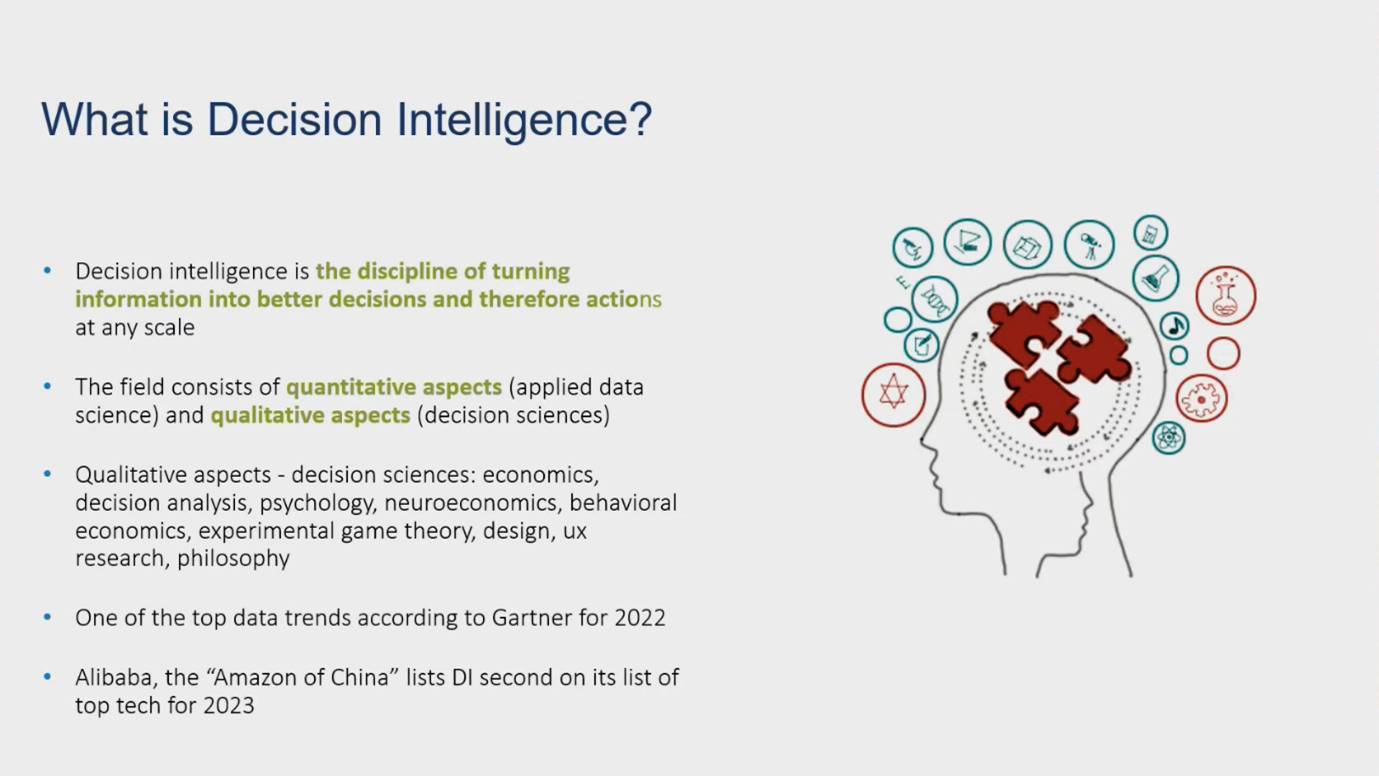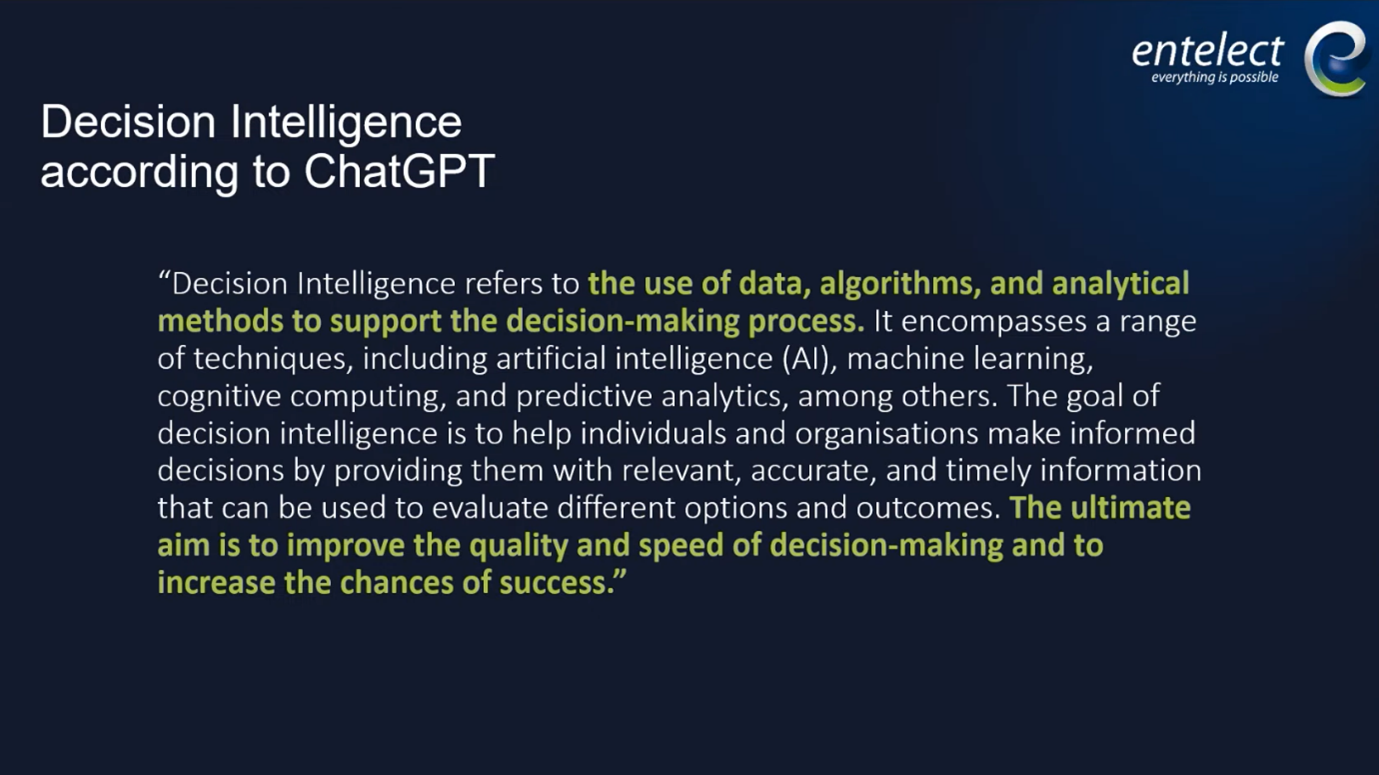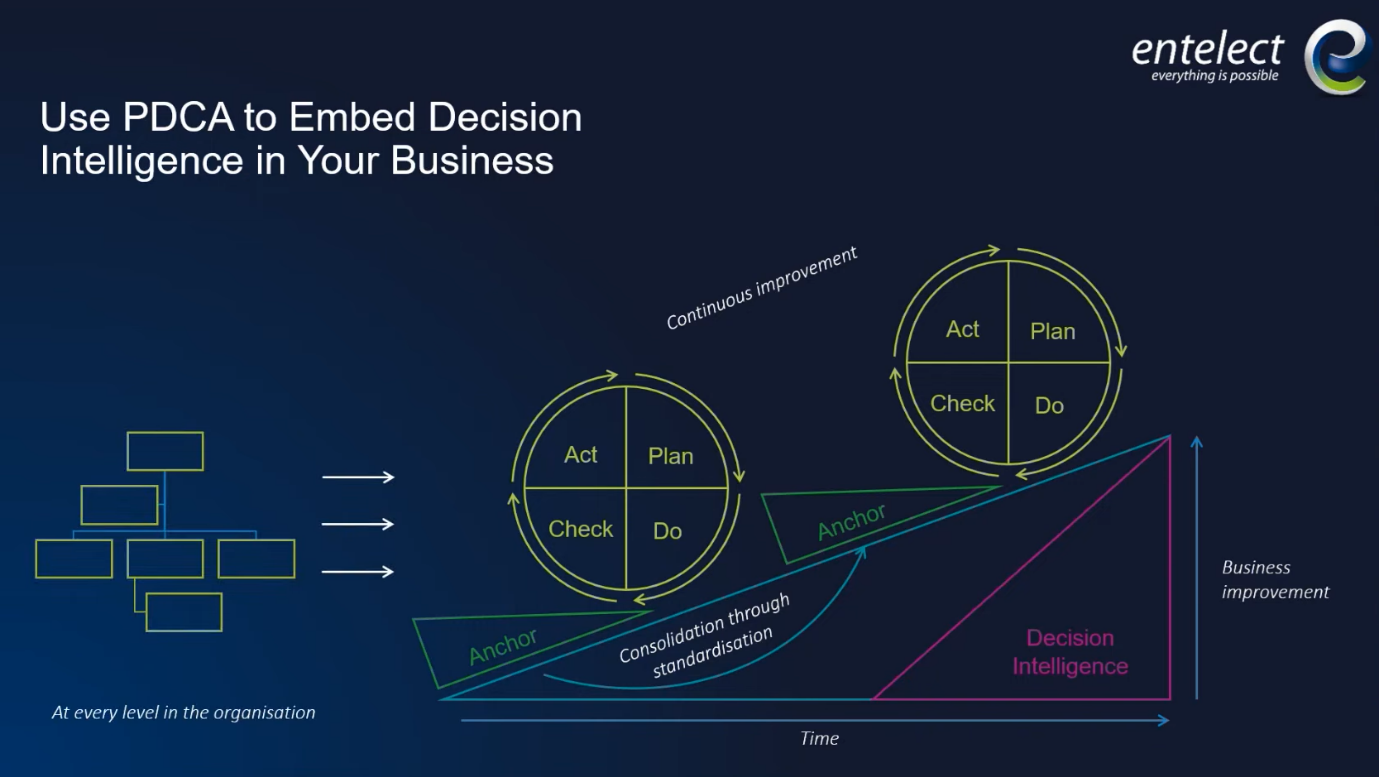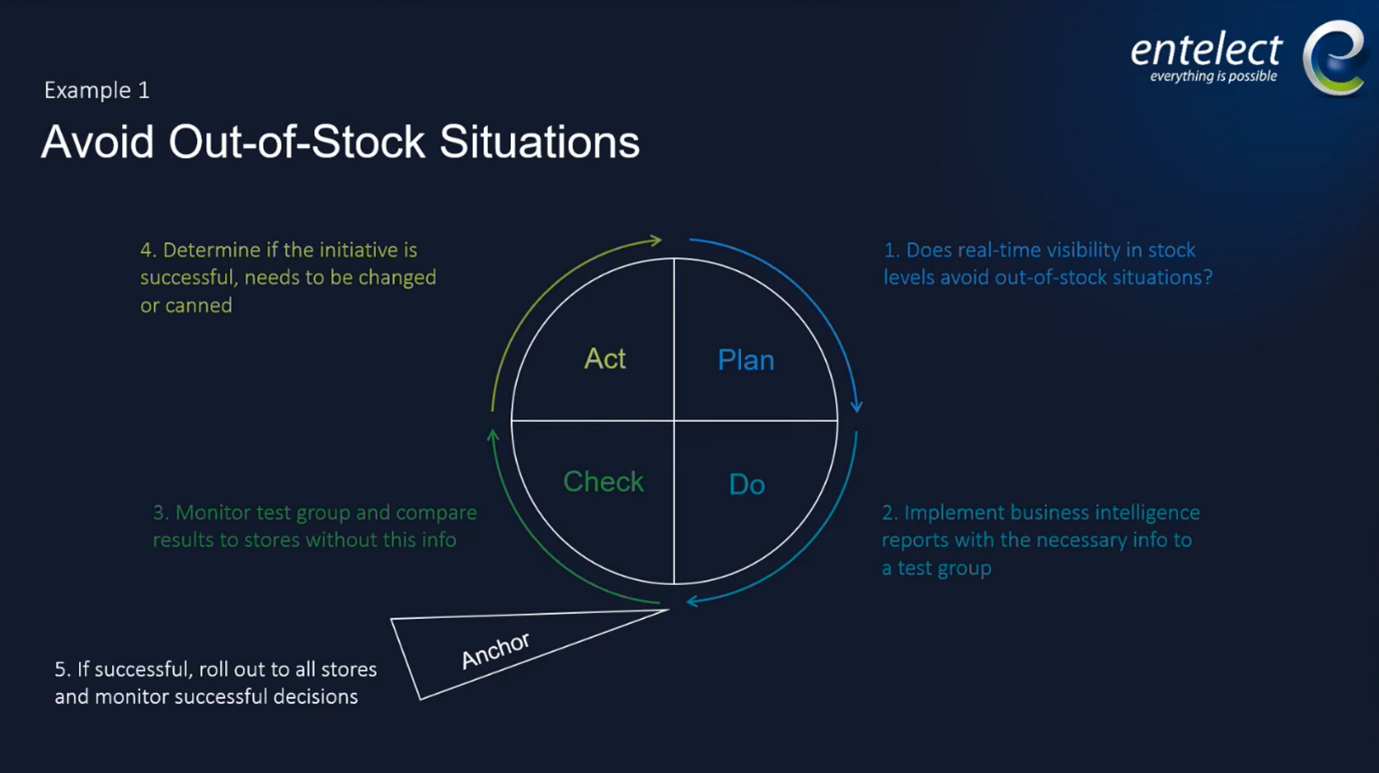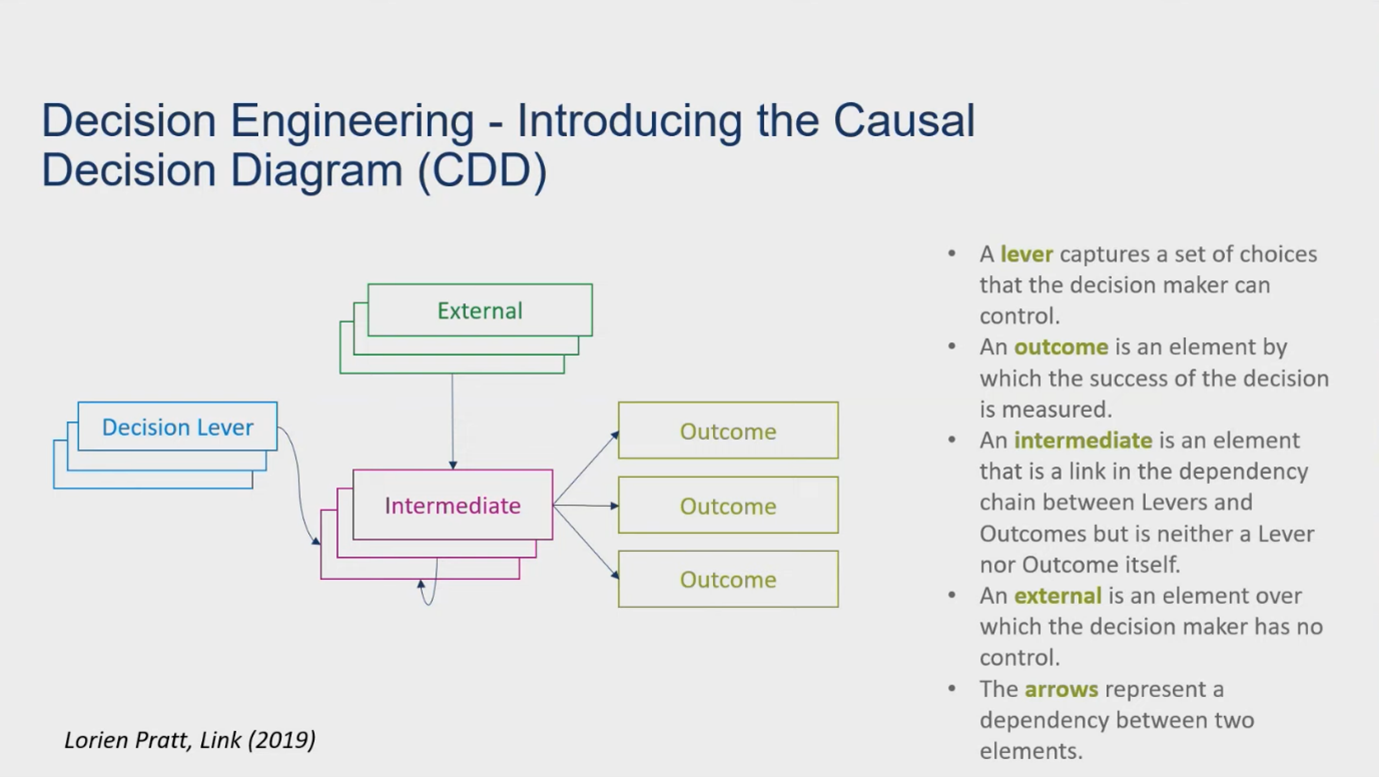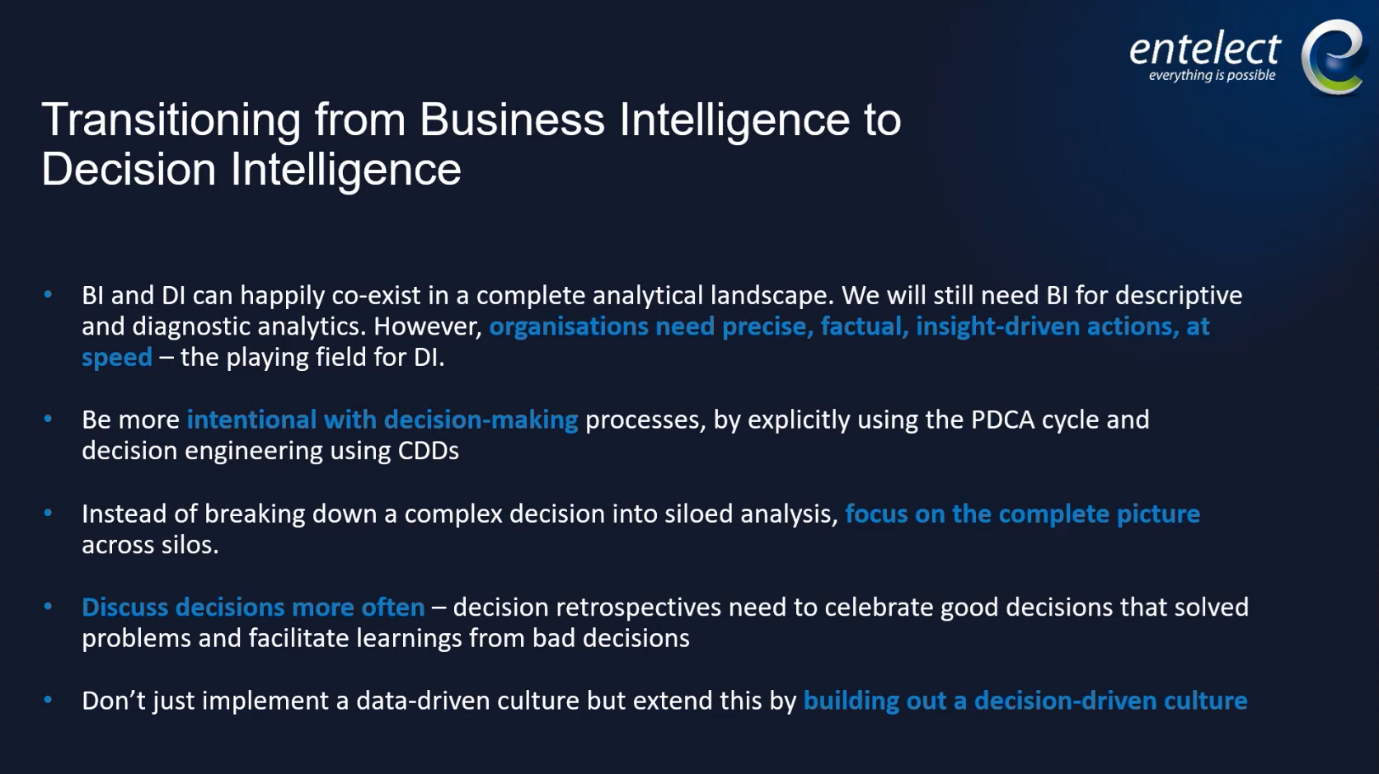Transitioning from Business Intelligence to Decision Intelligence with Erwin Bisschops
Executive Summary
Erwin Bisschops will explore the Theory of Perception and how individuals can perceive the same object in different ways. To demonstrate this concept, an experiment will be conducted using images of a rabbit/duck, an old/young lady, and a nurse/frog. He will delve into Decision Intelligence, which combines quantitative and qualitative elements to enhance decision-making and actions.
The Theory of Perception and Decision-Making will be explored, focusing on applying it to business intelligence. The challenges of self-service business intelligence will be examined, along with how Gartner's magic quadrant for analytics and BI platforms considers components like security, Cloud enablement, metadata, natural language queries, data storytelling, reporting, and visualisations.
The discussion will shift to the focus on technical capabilities in BI, which has led to a lack of understanding of how decisions are made. The alternative of an engineering approach to decision-making will be proposed, as opposed to romanticising gut-feel decisions.
Webinar Details
Title: TRANSITIONING FROM BUSINESS INTELLIGENCE TO DECISION INTELLIGENCE WITH ERWIN BISSCHOPS
Date: 26-May-2023
Presenter: Erwin Bisschops
Meetup Group: Data Managers
Write-up Author: Howard Diesel
Contents
Executive Summary
Webinar Details
The transition from Business Intelligence to Decision Intelligence
Introduction and Personal Background
Observations on Perception Theory
Perception, Decision-Making, and Business Intelligence
The Challenges and Focus of Business Intelligence in Decision-Making
Gut Feel versus Data-Driven Decision-Making
The Costs of the Bat and the Ball
The Two Operating Systems of the Brain and Decision-Making
The Impact of Decision-Making Processes on Decision Intelligence
The Importance and Impact of Decision Intelligence
The Impact of Silo Decision-Making and Tools in Decision Intelligence
The Plan-Do-Check-Act Cycle and Decision Intelligence in Business Improvement
Decision Intelligence and Optimizing Stock Levels
Causal Decision Diagram and Decision Engineering
Nestlé Boycott in the 1970s
The Importance of Decision Intelligence in Business Analytics
The Importance of Decision-Driven Culture in Organizations
Implementing a decision-driven culture in organisations
The Importance of Decision Models and Notation in Process Management
The Role of Biases in Decision Support
Importance of Decision Intelligence and Perception in Decision-Making
The transition from Business Intelligence to Decision Intelligence
Opening the webinar, Erwin Bisschops expressed his appreciation for being included and emphasised the importance of connecting with other data professionals. He encouraged participants to share their thoughts on a specific section and revealed plans to showcase social experiments that highlight biases in decision-making. To ensure a more organised discussion, Erwin suggested using the chat for participants to engage and provide answers.
The topic of transitioning from business intelligence to decision intelligence was introduced and discussed in detail, highlighting its relevance and current trends. Erwin acknowledged the potential biases introduced by AI models, such as ChatGPT, and compared them to human decision-making, which is also susceptible to biases.
Erwin expressed his intention to provide further insight into the impact of AI models on decision-making through the presentation. The goal is to explore how people's biases can be manifested in large language models. It's a meaningful discussion that aims to shed light on the potential biases that AI can introduce in decision-making.
Introduction and Personal Background
Reflecting on using statistics, Erwin questions the implications of using them without truly understanding their purpose. He also discusses the challenges that business intelligence has faced over the years. Erwin mentions the impact of Daniel Kahneman's book "Thinking, Fast and Slow" on current experiments and introduces the concept of decision intelligence.
Observations on Perception Theory
Erwin Bisschops is an experienced professional in the data field, having worked for 25 years in master data management, data analytics, and data science projects. During his career, he collaborated with Keith Jones at Harvey Jones in South Africa, where he was first introduced to JG. Additionally, Erwin spent over a decade at Elton Carabiner, where he oversaw the data and analytics Consulting Services arm. He manages a team of 85 data professionals at Intellect, ensuring their successful delivery in various data-related disciplines. During a presentation, Erwin introduced the theory of perception, highlighting that individuals can perceive the same thing objectively but describe it differently. He illustrated this concept by showing pictures, starting with an image that can be seen as a duck or a rabbit, depending on the angle. Erwin then presented a picture that can be interpreted as either an old lady or a young lady leaning on one's perspective.
Figure 1 Quick Introduction
Perception, Decision-Making, and Business Intelligence
During a visual perception exercise, Erwin mentioned the example of a frog and a horse. The discussion then shifted to the theory of perception and how it influences decision-making. Erwin stressed the significance of being able to describe things in various ways while still being accurate.
The conversation then moved towards the impact of perception on decision-making in organisations, leading to the topic of decision intelligence in business intelligence. Erwin also mentioned the challenges associated with self-service business intelligence.
To illustrate the concept of decision intelligence, common phrases like "better decisions faster" and "actionable intelligence" were brought up to garner a response from the audience. Thus, assessing their opinions.
Figure 2 Quick Experiment: Theory of Perception
The Challenges and Focus of Business Intelligence in Decision-Making
Business intelligence (BI) aims to help individuals understand large amounts of organisational data without requiring knowledge of query languages, databases, or statistics. However, BI solutions often face complications regarding data quality and availability and understanding of database structures.
Comparing BI platforms and tools is a common topic of discussion, with emphasis placed on functionality and features rather than business decision-making requirements. Technical capabilities and infrastructure requirements dominate BI discussions, overshadowing the challenges.
The main objective of BI is to turn data into useful information by adding context and relevance. This is done to guide accurate decision-making and actions.
Figure 3 Typical BI Catch Phrases
Gut Feel versus Data-Driven Decision-Making
In the past, there has been a romanticisation of relying on intuition and following one's heart when making decisions. However, Erwin expresses that research has shown that, despite evidence to the contrary, 24% of executives and over half of Americans still prefer to rely on their gut instincts instead of data. An engineering approach to decision-making can be more effective, particularly in collaborative settings. To delve deeper into this topic, Daniel Kahneman's book "Thinking, Fast and Slow" is referenced. The Bat and the Ball challenge experiment is also mentioned, demonstrating how appearances can deceive the brain.
Figure 4 Gut Feel Decisions - Romanticised?
The Costs of the Bat and the Ball
Can you solve this problem? The Bat and the Ball cost $1.10, and the Bat cost $1 more than the Ball. What is the cost of the Ball in cents? Many people say 10 cents, but this is not correct. This problem shows how our brain handles decision-making and how we often rely on quick instincts. The mistakes made in this problem demonstrate the two systems in our brain: intuition and careful reasoning. Interestingly, even Harvard students were tricked by this problem and answered “10 cents.”
Figure 5 The Bat and the Ball Challenge
The Two Operating Systems of the Brain and Decision-Making
According to Daniel Kahneman, the human brain has two decision-making systems. System one operates unconsciously and automatically, accounting for 95% of our thinking. System two, however, is slow and rational, accounting for only 5% of our thinking. However, system two often relies on system one's suggestions to conserve energy, making it lazy.
The Theory of Small Numbers suggests that humans see relationships and causality even when they don't exist, thus leading to misinterpretations.
Misinterpretations can occur when decisions are based on small sample sizes. For instance, the Bill Gates Foundation researched successful schools and concluded that smaller schools were better. However, the sample size was too small, and the results were skewed because smaller schools tend to be more variable.
Figure 6 Our Brain and Decision-Making
The Impact of Decision-Making Processes on Decision Intelligence
The brain uses two distinct systems, system one and system two, to process information. However, decision-making can be influenced by the tendency to make quick judgments based on limited information, known as the theory of small numbers.
Business decision-makers must navigate a complex and ever-changing landscape, including disruptive supply chain forces, high employee turnover, and rapidly evolving markets. Additionally, the rise of digital platforms presents new challenges to decision-making.
While BI reports and dashboards may offer some assistance, they are not always enough to provide the necessary insights and answers.
The Importance and Impact of Decision Intelligence
Combining quantitative and qualitative factors, decision intelligence utilises data sciences, statistics, and game theory to enhance decision-making and action-taking on a large scale.
Gartner has recognised this emerging trend as a top data trend for 2022 and is receiving priority attention from companies such as Alibaba. Gartner has included decision intelligence in three of their current hype cycles: AI, data and analytics, and emerging tech in finance.
Despite having existed for some time, decision intelligence is expected to reach the plateau of productivity within two to five years.
Organisations are now emphasising decision support, a concept similar to decision intelligence. Harmonising collective decision-making across an organisation is crucial for achieving better outcomes and minimising ad hoc, siloed decisions.
In response to increasing complexity in the environment, organisational structures such as machine bureaucracies and entrepreneurial organisations have emerged.
Figure 7 What is Decision Intelligence?
The Impact of Silo Decision-Making and Tools in Decision Intelligence
Organisations that rely on isolated decision-making can face inefficiencies and adverse business outcomes. For instance, a company that evaluates success based on the number of trucks dispatched by depot managers without considering their capacity may receive bonuses but still experience overall poor results.
Gartner highlights the emergence of decision intelligence tools such as Quantellia, Tellius, and Domo, which aim to simplify decision-making processes.
The Plan-Do-Check-Act (PDCA) cycle, first introduced by Edward Deming as part of Quality Management, provides a simple starting point for decision intelligence. It emphasises the importance of data-driven decisions.
According to ChatGPT, decision intelligence aims to improve the quality and speed of decision-making processes to increase the likelihood of success.
Implementing basic strategies like the Plan-Do-Check-Act cycle can lay the foundation for incorporating decision intelligence practices into organisations.
Figure 8 Decision Intelligence according to ChatGPT
The Plan-Do-Check-Act Cycle and Decision Intelligence in Business Improvement
After World War II, Japan recovered thanks to the assistance of William Deming's Total Quality Management approach, which relied on using data to make informed decisions. The Plan-Do-Check-Act (PDCA) cycle is a valuable tool for any business to improve decision-making. Continuous improvement is crucial and involves taking action based on the right decisions. Standardisation and adaptation are also essential to ensure that business decisions and actions are consistent. Decision intelligence is vital to accelerating business improvement. One tangible example of applying the PDCA cycle is avoiding out-of-stock situations. The process involves planning, implementing a business intelligence environment, testing with a trial group, and monitoring results. Based on the success or failure of the initiative, actions are taken to implement or change it.
Decision Intelligence and Optimizing Stock Levels
In the retail industry, implementing decision intelligence models can significantly enhance the decision-making process. One key factor is ensuring optimal stock levels to minimise risks and improve efficiency. Decision intelligence models can prescribe the ideal stock levels and order quantities, preventing stockouts and overstock situations. It is important to evaluate and monitor the effectiveness of these models regularly.
Decision intelligence can be applied in various settings, including offices and homes. For instance, sensor data can be analysed in a manufacturing environment to provide useful information to decision-makers. While human decision-making is still necessary, decision engines can explore input-response combinations and make automated decisions. Trigger-action-response plans in the mining industry are an example of decision engines.
Figure 10 Avoid Out-Of-Stock Situations
Causal Decision Diagram and Decision Engineering
During his presentation, Erwin highlights the significance of automation in decision-making processes and introduces the concept of decision engineering. He mentions a book by Dr Lorien Pratt that discusses the causal decision diagram, which illustrates decision levers on the left, outcomes on the right, intermediates, and externals.
The complexity of these diagrams varies depending on the decision being made, and decision engineering is beneficial for producing high-impact, low-frequency decisions. The speaker stresses the importance of balancing analysis and action when making decisions.
Figure 11 Decision Engineering - Introducing the Casual Decision Diagram (CDD)
Nestlé Boycott in the 1970s
During the 1970s, a boycott against Nestle arose due to increased awareness about social responsibility. This was also when social contracts between businesses and society were first officially recognised in the United States. Stakeholders expected to see a rise in profits, revenue, and costs if baby formula was sold in African countries. However, poverty rates and mothers' attempts to cut costs led to a focus on infant malnutrition caused by using less baby formula. As a result of public outcry, Nestlé suffered reputational damage, loss of business, and decreased profits.
Figure 12 Nestle CDD Example
The Importance of Decision Intelligence in Business Analytics
This example emphasises the importance of considering factors beyond stakeholder expectations and profitability when making decisions. Machine learning models can help analyse and predict the outcomes of different choices. Taking a holistic approach to decision-making is essential and eliminates organisational barriers. Decision intelligence and business intelligence can work together in the analytical landscape, providing precise and factual insights for effective actions. Decision intelligence is particularly useful for enabling quick, efficient decision-making processes.
The Importance of Decision-Driven Culture in Organizations
To make better decisions, we must be deliberate and engage our system two thinking. One effective method is the Plan-Do-Check-Act cycle, which improves decision-making. Instead of making isolated decisions, we should consider the complete picture across different departments to achieve better outcomes. Developing a decision-driven culture, not just a data-driven one, is crucial for organisational success. Encouraging regular discussions about past decisions, both positive and negative, can help embed decision-making into the organisation. We can gain additional insights into improving decision-making processes by conducting further research and gathering more material on this topic.
Figure 13 Transitioning from Business Intelligence to Decision Intelligence
Implementing a decision-driven culture in organisations
The value of cataloguing decisions and implementing strategies involving all organisation members was emphasised. The need for retrospective analysis to comprehend the repercussions of decisions and to foster a culture that values decision-making. Erwin also stressed the importance of honesty in decision-making, even in cases where the outcome is unfavourable. He highlighted the availability of decision intelligence platforms that provide collaborative spaces for decision collection and analysis. These platforms function as metadata catalogues, tracking and documenting past decisions made within the organisation.
The Importance of Decision Models and Notation in Process Management
The Object Management Group has created a method called decision model and notation (DMN) for organisations to model their decisions, similar to business process modelling notation (BPMN). Decision models help define processes, input data, and relationships between decisions. Erwin emphasises the importance of comprehending the impact of decisions and their interrelatedness. These modelling techniques encourage healthy discussions and understanding among team members. Visible decision models ensure that the correct path is followed. When using data quality expectations for business intelligence (BI), it's vital to know the report's purpose and how it supports decision-making. Reports should add value and aid in decision-making, not just extract data. A decision inventory is necessary to understand and prioritise the critical decisions that must be made.
The Role of Biases in Decision Support
When making decisions, biases play a significant role. Identifying biases can be made easier through qualitative analysis. However, humans' objectivity is often questionable because of their subjective perception. Biases can be quantifiable and can impact decision-making. Moreover, biases can differ in various countries and cultures. Biases can also affect the outcome of decision-making. Thus, including biases in decision support systems is essential. Excluding biases can result in an unrealistic portrayal of reality.
Importance of Decision Intelligence and Perception in Decision-Making
In the theory of perception experiment, it is clear that objectivity is subjective. This is because each individual perceives and describes things differently. Thus, decision intelligence and modelling techniques can be used to improve decision-making processes. These techniques bring assumptions into explicit view for healthy discussions. It is important to note, also, that different perspectives can significantly impact decision outcomes. For example, one person may see a frog in a picture, while another may see a horse.
While gut feelings can be helpful, they often stem from biases and should be minimised when making important decisions. It is crucial to engage in system two thinking and be aware of biases when making decisions as a group. The true power lies in the decision-making process and the varied perspectives that are brought to the table. It is not about being right all the time but rather understanding the context of the decision. Collaboration and the sharing of perspectives are essential to making effective decisions. This allows for a more well-rounded and informed decision-making process.
If you want to receive the recording, kindly contact Debbie (social@modelwaresystems.com)
Don’t forget to join our exciting LinkedIn and Meetup data communities not to miss out!

